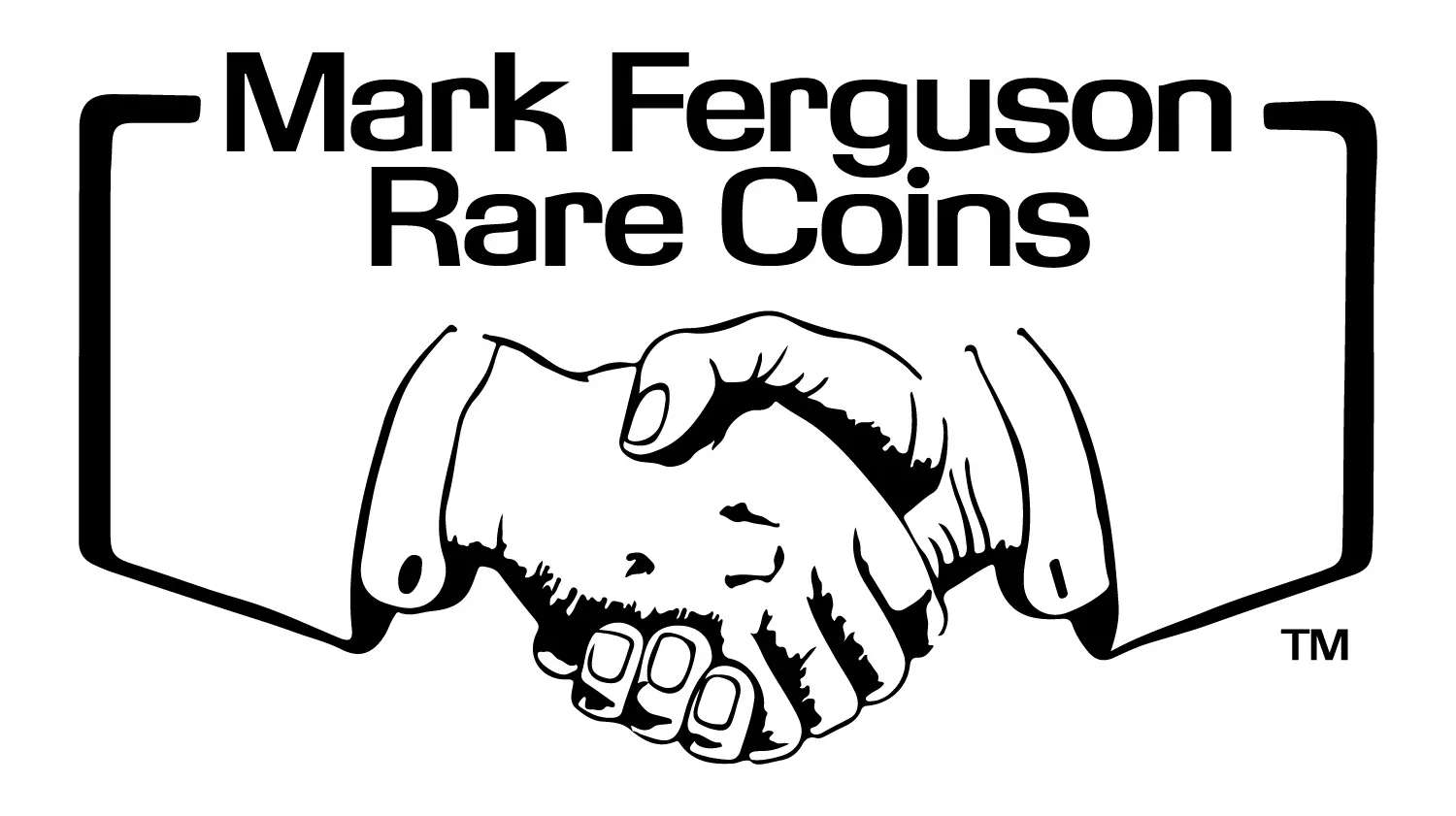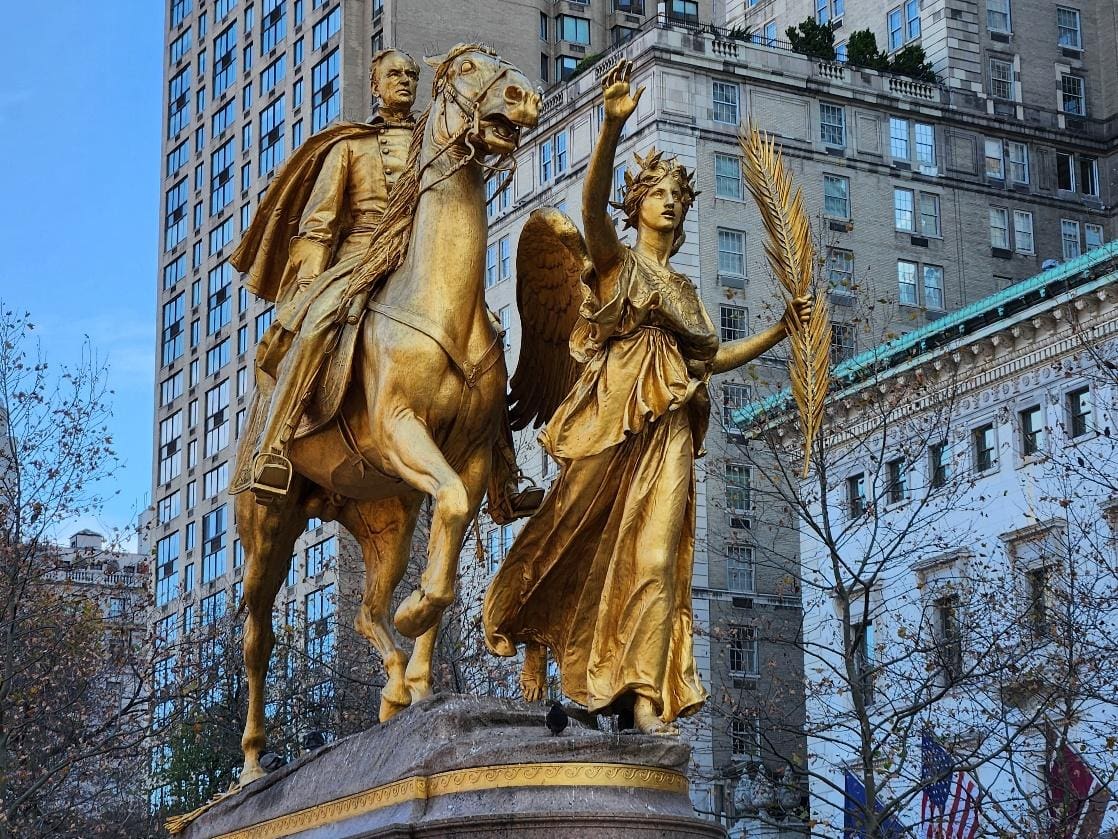
My Hometown Connection to the “Saint”
By Mark Ferguson,
In the world of coins, the Saint-Gaudens $20 Double Eagle gold coin is often referred to as the “Saint.” The name comes from master sculptor Augustus Saint-Gaudens (1848-1907) who was commissioned by the U.S. government in 1905 to redesign the $20 gold coin.
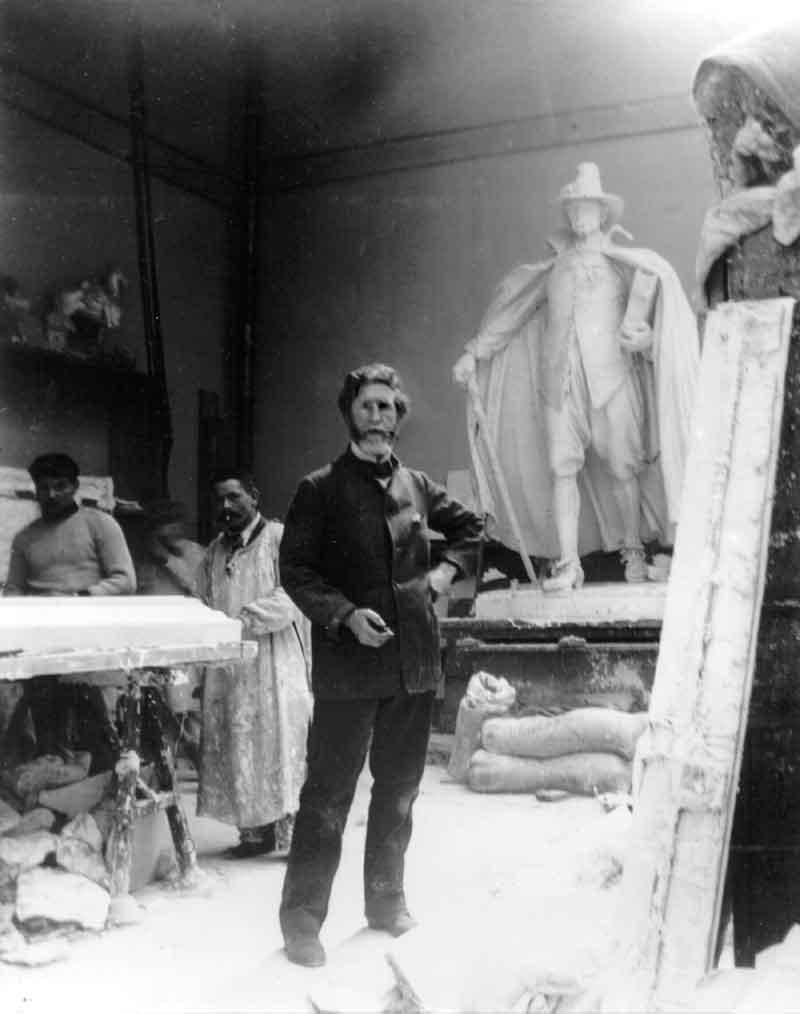
At the time, President Theodore Roosevelt wanted to improve the artistic beauty of the nation’s coinage. And that they did! The “Saint” has long been recognized as America’s most beautiful coin.
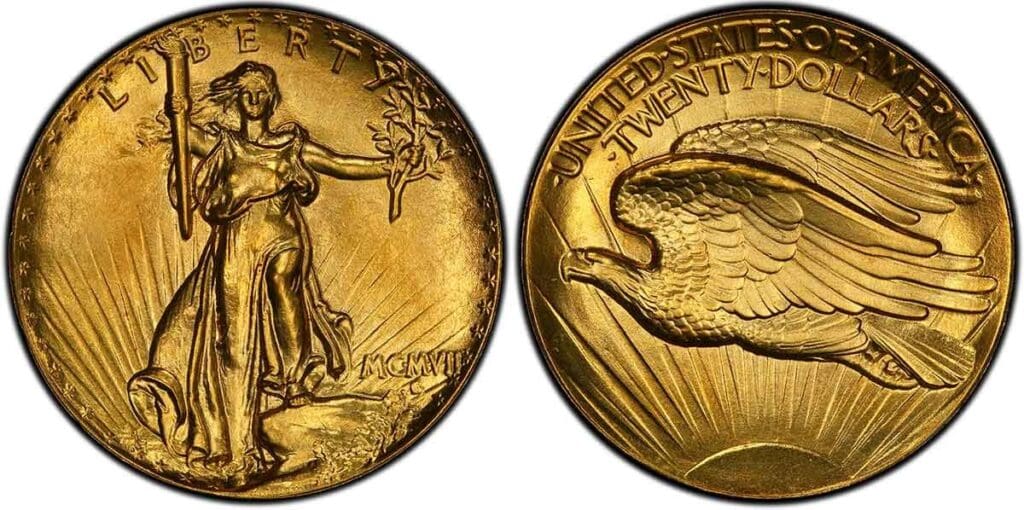
Saint-Gaudens wanted a “high-relief” coin, but after making three trial strikes, the dies cracked. During this time, Augustus Saint-Gaudens passed away on August 3, 1907. In the coming weeks, 500 high-relief Double Eagles were struck, but they couldn’t be used in everyday commerce because of the difficulty in striking them.
The Mint decided to correct this problem and Charles Barber, Chief Engraver of the U.S. Mint, reworked the design to flatten the relief so the coins could be more efficiently struck. Soon, a new low-relief coin was created and issued that same year – 1907.
The image that appears on the obverse (front) of the new Double Eagle gold coin was based on the winged angelic figure that appears at the front of the Sherman Monument in New York City. The monument honors William Tecumseh Sherman (1820-1891), Commanding General of the U.S. Army. It’s located in Grand Army Plaza at the southeast corner of Central Park.
The angelic figure, leading General Sherman and his horse, is known as “Victory.” In designing the monument, Saint-Gaudens’ objective for Victory was to convey a look of power and forward motion.
Saint-Gaudens was a perfectionist, making endless changes to the monument before it was finished to his satisfaction. His wife, Augusta, sewed countless tiny cloaks from which to model folds in the general’s cloak, and likely did so for Victory’s gown as well.
Actually, Saint-Gaudens’ role in sculpting the monument was more of a supervisory role than actually doing the sculpting himself. He employed talented assistant sculptors who did the actual physical sculpting or modeling on the monument. Modeling is the building up of soft material rather than carving in which material is removed.
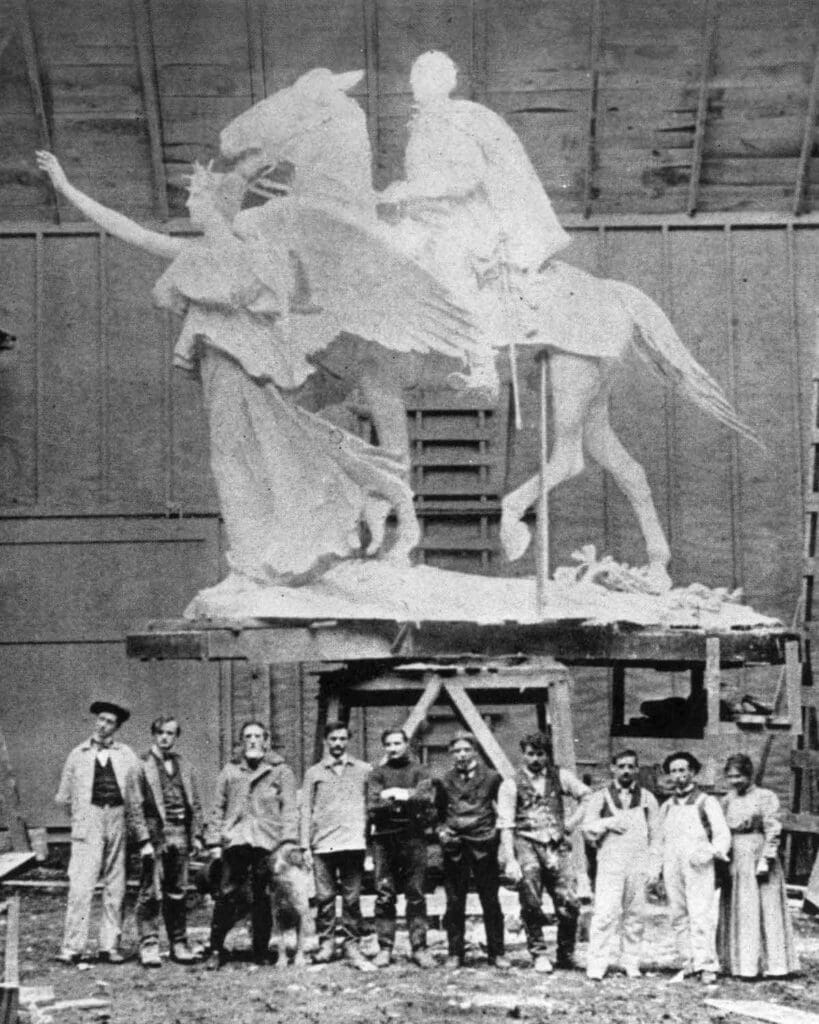
General Sherman’s horse, Ontario, was modelled by Alexander Phimister Proctor (1860-1950) who was known for his sculptures of animals. “Victory” was modelled by Helen Farnsworth Mears (1871-1916) who was Augustus Saint-Gaudens’ first female assistant and life-long friend.
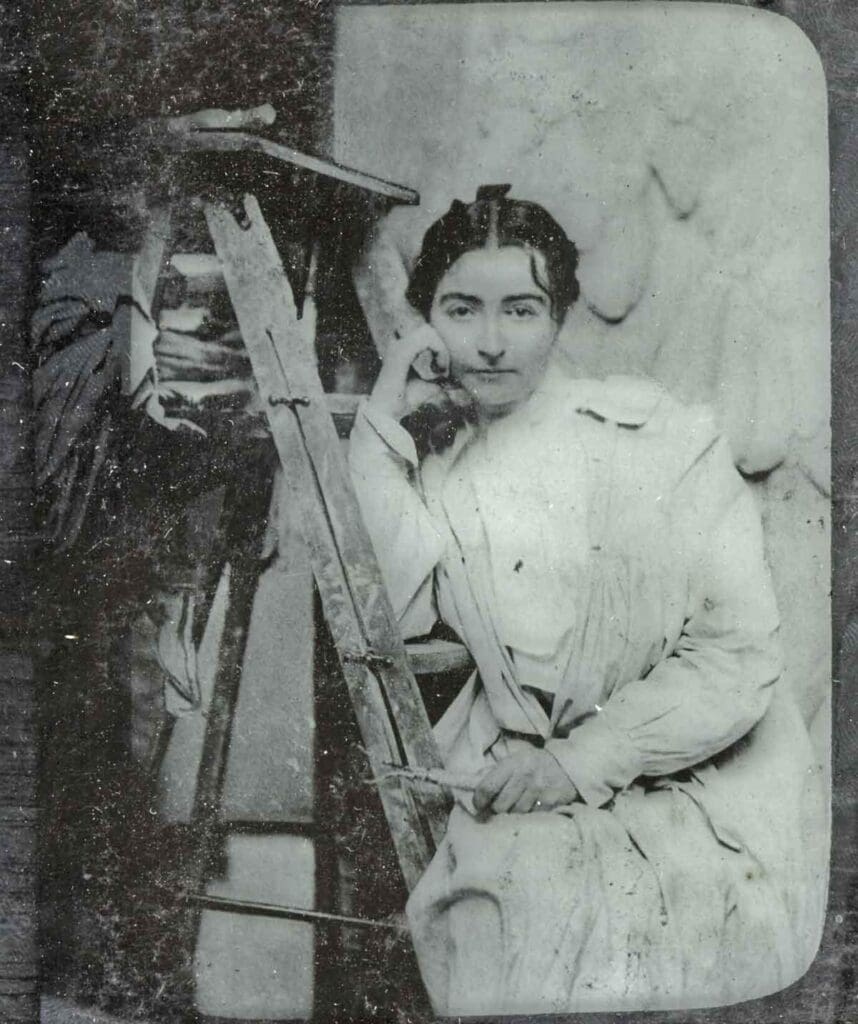
Helen Mears was from my hometown, Oshkosh, Wisconsin. As we’ll see ahead, she was very close with her sister Mary Mears. They grew up about a mile from where I did.
During the time the Sherman Monument was being “modeled,” Saint-Gaudens was becoming seriously ill. One art historian noted, “Given his illness, he relied on assistants to carry out much of the physical work.”
The Sherman Monument was unveiled in New York in 1903. A full decade after Saint-Gaudens was approached to create a monument honoring General Sherman. The work on the monument was performed in New York, Paris and Cornish, New Hampshire, where Saint-Gaudens’ estate was located. Today it’s a national park.
The following is from the book Helen Farnsworth Mears by Susan Porter Green. “In December 1897, or January 1898, Saint-Gaudens arrived in Paris and began work in earnest on a large equestrian Statue of General William Tecumseh Sherman. By this time, Helen and Mary Mears were in Italy, studying in museums and observing the public monuments.”
“On May 14, 1898, Saint-Gaudens wrote to Helen from Paris. ‘The offer I made you still holds good. I will say nothing though that may influence your decision. I thought it possible that the war might have made it necessary for you to return via France and then we might have discussed the plan with more leisure than before. I believe now that the steamers still leave from Italy and if you decide not to return here I don’t know when I shall have the pleasure of seeing you again. However, my best wishes will follow you ‘where ‘er you go.’ My thoughts very often revert to my pupils, particularly the most talented ones, and if you have the time and the inclination, it will give me pleasure to hear of your progress.'”
“The ‘offer’ to which Saint-Gaudens referred was his proposal that Helen work as his assistant on the General Sherman. Helen accepted his offer, and she and Mary returned to Paris. While in Paris, she [Helen] also continued her studies at the Académie Vitti.”
Augustus Saint-Gaudens became acquainted with Helen Mears and her work in 1893 at the World’s Columbian Exposition in Chicago. She exhibited “Genius of Wisconsin,” a work commissioned by the State of Wisconsin when she was just 21 years old.
During fall 1894, Helen enrolled in the Art Students’ League in New York City where Saint-Gaudens taught from 1888 to 1897. She studied under him for two years and worked in his private studio as his first female assistant. In 1896, Helen and Mary sailed to Europe. Saint-Gaudens followed about a year later.
After accepting his commission to assist Saint-Gaudens on the Sherman Monument, Helen worked for him half days from May to November 1898. During the rest of the time, she worked on other sculptures in her own Paris studio which Mary Mears was tasked with acquiring.
According to Mary, “My introduction to Saint-Gaudens was in my sister’s Latin Quarter studio in the Rue Notre Dame des Champs. He had come to inspect a bust she had started for him; for like many masters, past and present, he employed the most advanced of his students to assist him in his work. I was fresh from Wisconsin and my chief concern that day was the atelier [artist’s studio], for it had been my responsibility. Would Saint-Gaudens approve the light? Would he think the place suitable for the work in hand? Imagine my relief then, when he turned to me and said: ‘It’s perfect. I congratulate you, Mademoiselle, on finding such a spot.'”
“How little he guessed what the achievement had cost me! I had been sent by my sister, who was finishing a term at the Académie Vitti, to secure a studio with adequate skylight (there was a tax on windows in those days), with sufficient floor space to admit of a long view of the work, with a balcony wide enough to accommodate two couches, and finally with a sink and running water. This last item was second only in importance to the light. And all these requirements I had met and more; for, in addition, there was a delightful overrun garden with a small broken-nosed, moss-covered statue in the center. After hours of arduous searching, I had returned at twilight triumphantly with the lease ready for my sister’s signature. Small wonder that I was filled with pride.”
In her studio, Helen created a “bas-relief” sculpture of Augustus Saint-Gaudens. Bas-relief is a shallow, three-dimensional sculpture, like that of most coins. Saint-Gaudens was illustrated in the foreground while the Sherman Monument appeared in the background.
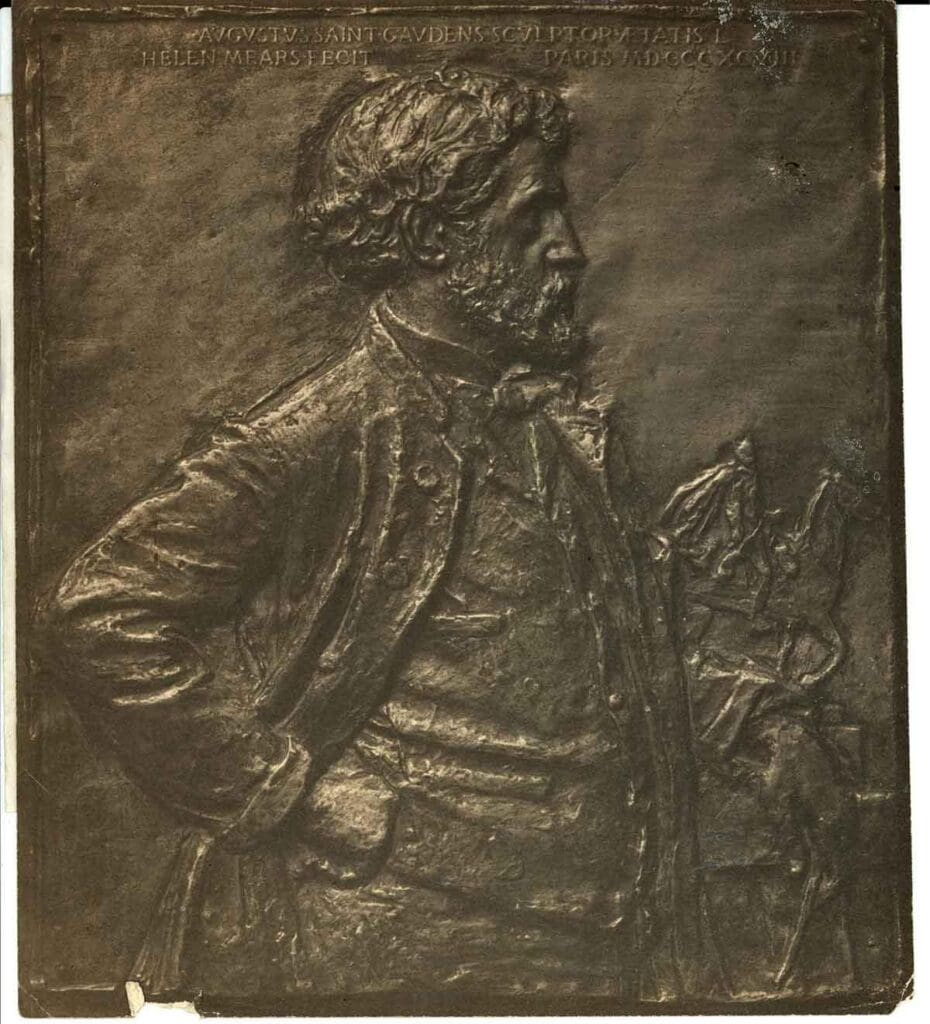
Saint-Gaudens’ studio was located in the Montparnasse area of Paris. Montparnasse has been known as an area for intellectuals and artists. It’s located in the “left bank” which is the south side of the River Seine, about a half hour walk from where Helen Mears’ atelier was located in the Latin Quarter. The Latin Quarter is also in the left bank and was another area of the city that attracted artists.
Reminiscing many years after her sister [Helen] died, Mary Mears recalled some of the experiences the Saint-Gaudens team had together: “It was impossible to associate with Saint-Gaudens daily, as we were doing, without becoming acquainted with his friends, not only with those with whom he was in contact at the moment but those who had vanished from human sight as well … At the time of which I write, MacMonnies, Whistler, and Saint-Gaudens were in the habit of dining together at Foyot’s.”
To his friends, Augustus Saint-Gaudens was known as “Gus.” According to Mary: “One such incident I heard described, partly by my sister and partly by Mr. Saint-Gaudens. Perched on a ladder, my sister was modeling on the Sherman monument, under his direction, when Whistler, dressed in the odd style he affected, with his white lock and pointed beard, entered the studio. He wanted the sculptor [Gus] to go with him to the Louvre.”
Working in Paris provided the Saint-Gaudens team with wonderful opportunities to study many of the world’s greatest works of art. That’s the reason Helen Mears went to Paris in the first place. Although she died young, at just 43 years old in 1916, she would have seen the Saint-Gaudens $20 Double Eagle gold coin in use. Again, it was introduced by the Mint in 1907.
